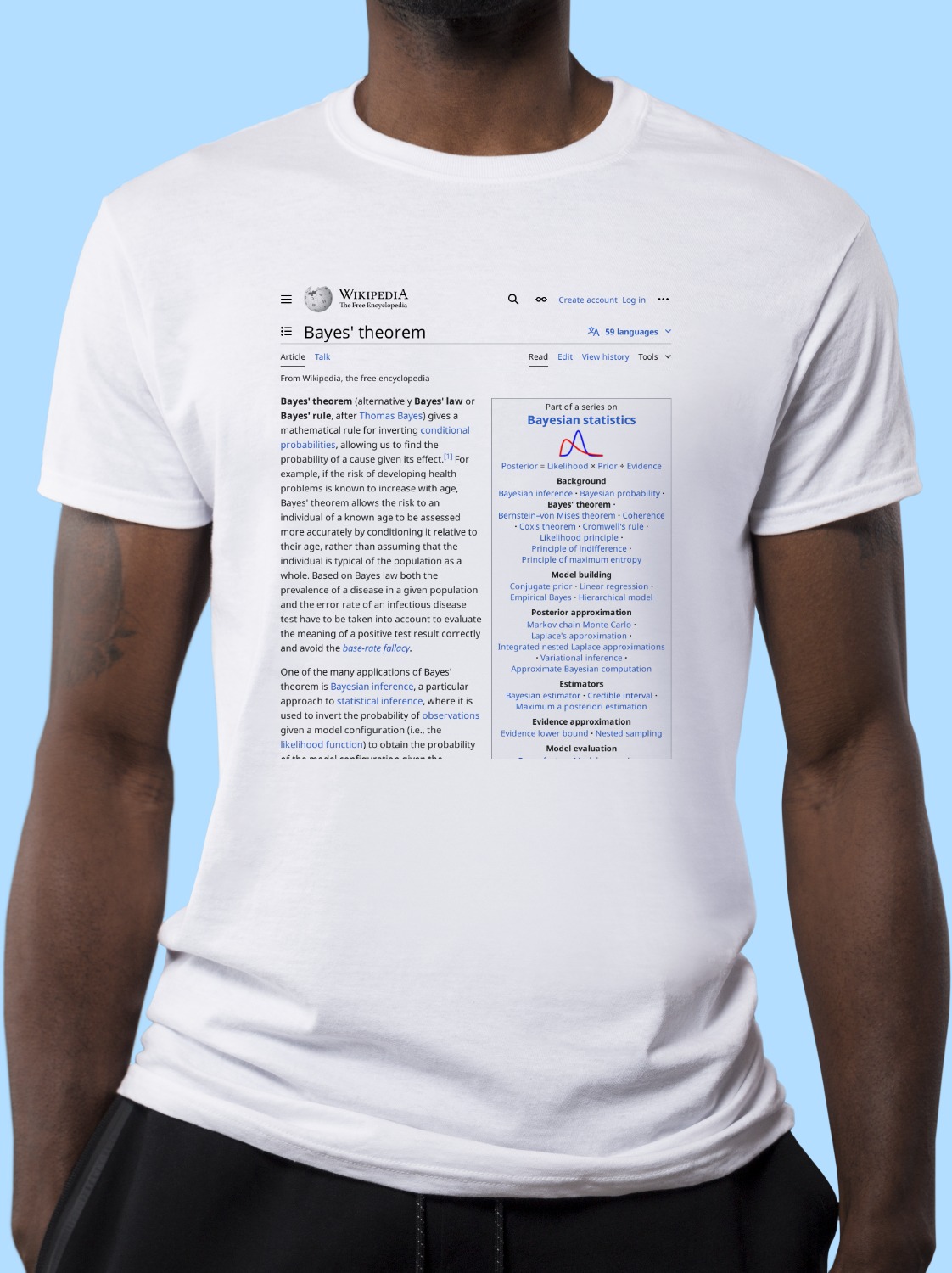
Bayes' theorem Shirt
A classic cotton tee emblazoned with the Wikipedia article on Bayes' theorem ↗.
cotton tee emblazoned with the Wikipedia article on Bayes' theorem ↗.- Preshrunk jersey knit
- Seamless double-needle 2.2 cm collar
- Taped neck and shoulders
- Tear away label
- Double-needle sleeve and bottom hems
- Quarter-turned to eliminate centre crease
Bayes' theorem (alternatively Bayes' law or Bayes' rule, after Thomas Bayes ()) gives a mathematical rule for inverting conditional probabilities, allowing the probability of a cause to be found given its effect. For example, with Bayes' theorem, the probability that a patient has a disease given that they tested positive for that disease can be found using the probability that the test yields a positive result when the disease is present. The theorem was developed in the 18th century by Bayes and independently by Pierre-Simon Laplace.
One of Bayes' theorem's many applications is Bayesian inference, an approach to statistical inference, where it is used to invert the probability of observations given a model configuration (i.e., the likelihood function) to obtain the probability of the model configuration given the observations (i.e., the posterior probability).
About Wikishirt
Wikishirt is a retail experiment that lets you buy a shirt with any Wikipedia Article printed on it. There are over 5 million Wikipedia articles, so we have over 5 million shirts.Check out our homepage for random featured shirts and more!